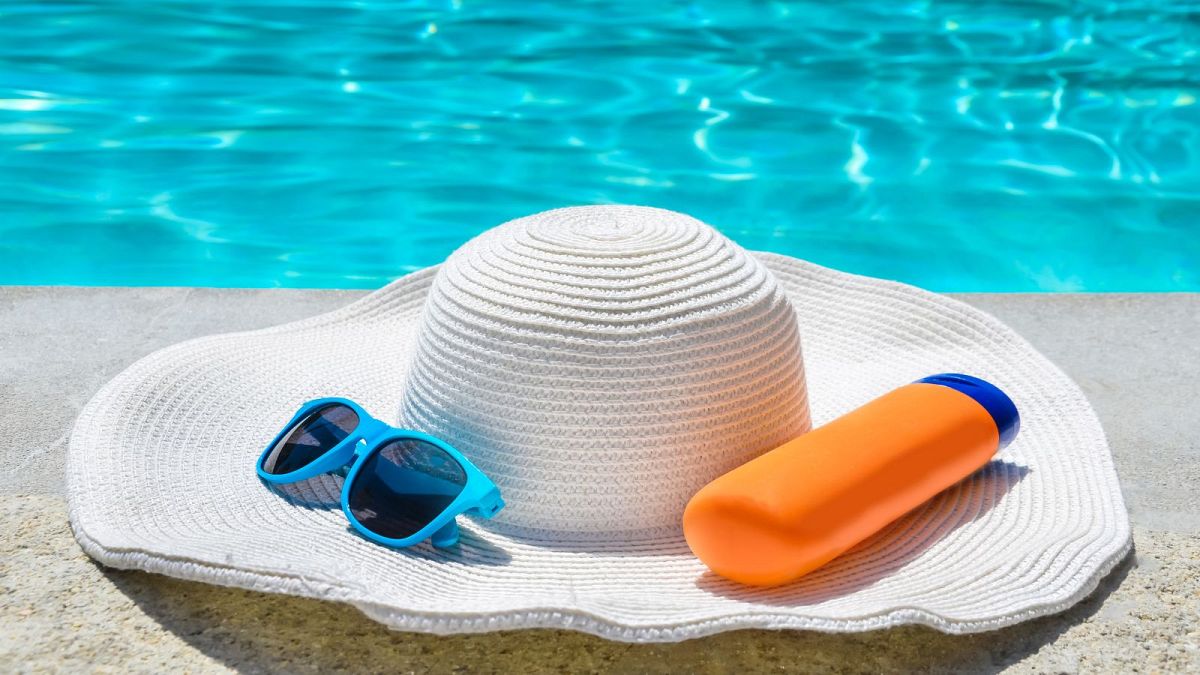Summer is here and it's tempting to go outside and enjoy the sun - but it’s important to take care. Here’s how.
Several European countries are currently experiencing heatwaves, and after long hours spent in front of the screen during the week, it can be tempting to bask in the sun at the first opportunity.
However, in the short term it can be easy to burn, while in the long term, the effects of the sun are not merely aesthetic.
Dr Fayne Frey, a US-based dermatologist who specialises in independent reviews, explains that "the sun emits ultraviolet radiation, which comes in different wavelengths: shorter wavelengths known as UVB rays, and longer wavelengths called UVA rays that can pass through the glass.”.
She emphasises that “these ultraviolet rays actually damage the DNA in the cells”. This damage has both short-term effects, such as sunburn, and long-term consequences, such as an increased risk of skin cancer.
Dr Frey advocates for a comprehensive program and highlights that sunscreens don't block 100 per cent of the UV rays. "The most important thing is to avoid the intense midday sun," she tells Euronews Next. If that's not possible, the most effective way to protect yourself is by covering the skin with clothes and wearing a hat with a brim.
When it comes to babies, sun protection measures should be closely followed as their skin is thinner and more fragile.
Then, after those steps are completed, sunscreen should be applied to the exposed skin.
How to choose a good SPF?
Sunscreen should cover both UVA and UVB protection, which has been a legal obligation within the EU since 2006.
One important detail often forgotten when stepping onto a sandy beach is the need to apply a sufficient amount of sunscreen. On average, half a teaspoon is recommended for the face, and a shot glass is recommended for the body.
“I don't think most consumers put sunscreen on thick enough. You've got to put it on liberally to get the SPF that's on the label,” says Dr Frey.
Furthermore, when it comes to SPF, the rule can be summarised as "the higher, the better," with a minimum of SPF 30 recommended for all skin types.
“If you have a darker complexion, you definitely have natural protection, but you don't have an SPF 30 protection. Sunscreen should be applied on all skin types, regardless of how much pigment your skin produces,” she says.
Mineral or chemical sunscreen?
If you're unsure about the wide selection available, know that sunscreens can be divided into two categories: chemical and mineral.
Chemical sunscreens use a chemical reaction to convert UV rays into heat, while mineral sunscreens create a barrier that reflects UV using ingredients like titanium dioxide and zinc oxide filters.
The French Society of Dermatology favours mineral sunscreens because they don't penetrate the skin, reducing the likelihood of side effects.
Moreover, some components that can be found in chemical sunscreens draw concerns from researchers. Last week, it was revealed in a press leak that the French health agency (ANSES) has called for a ban on sunscreen containing octocrylene.
Octocrylene degrades over time, generating benzophenone, an endocrine disruptor that can pass through the skin.
This request is part of an ongoing assessment under REACH, the European regulation that identifies and evaluates chemical substances in Europe, as explained by France Info.



